Afternoon All
last night I performed my reflector experiment detailed in the winter crafting thread.
First I got the tarp up and the stove going for a brew
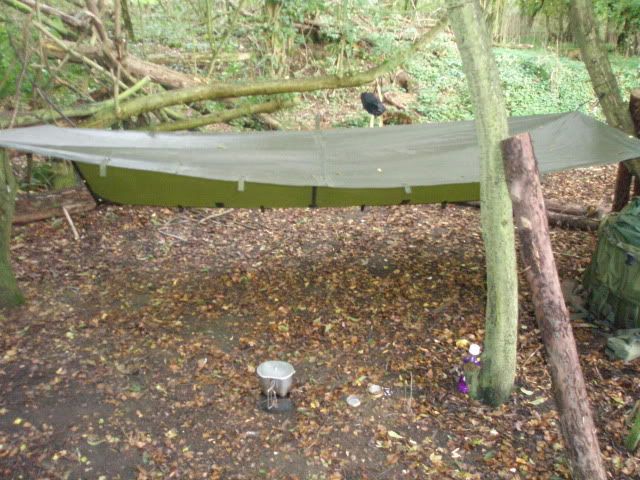
Then started work on the reflector with my trust GB SFA and a borrowed sledgehammer
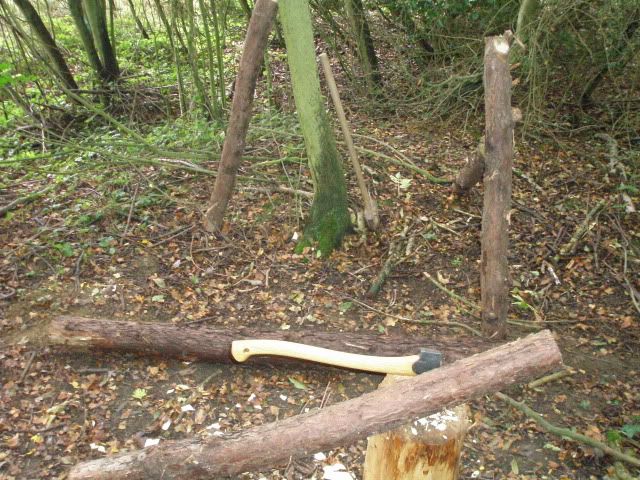
Finished reflector
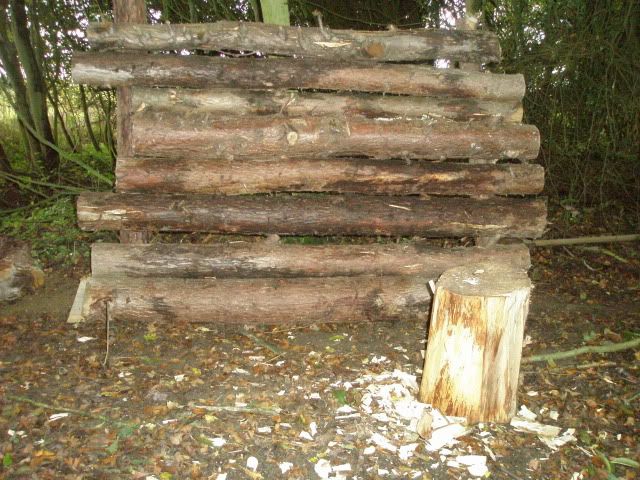
At this point the weather decided to give me a shower so I took shelter under the tarp made a brew and battoned some sticks to light the fire
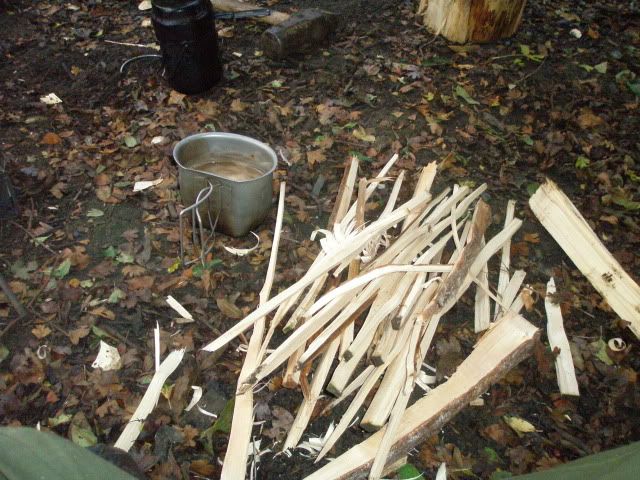
Got the fire going with some birchbark and tinder card
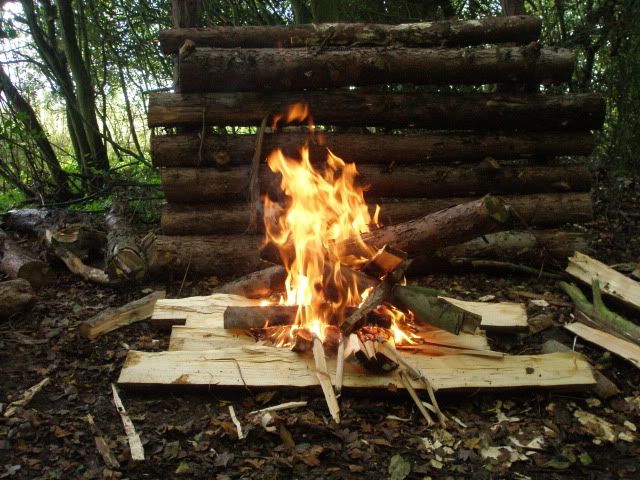
I then spent the rest of the afternoon reading a book-Arrowland by Pete Kane and brewing up copious amounts of tea

every half hour I took two temperature readings one from inside the tarp and one from behind the tarp about ten paces distance away to allow any potential heat from fire to have disappeared into the general surroundings.
From 15.30 until 18.00 I used the reflector pictured above and from 18.30 until 21.00 I used split logs to form the reflector like so
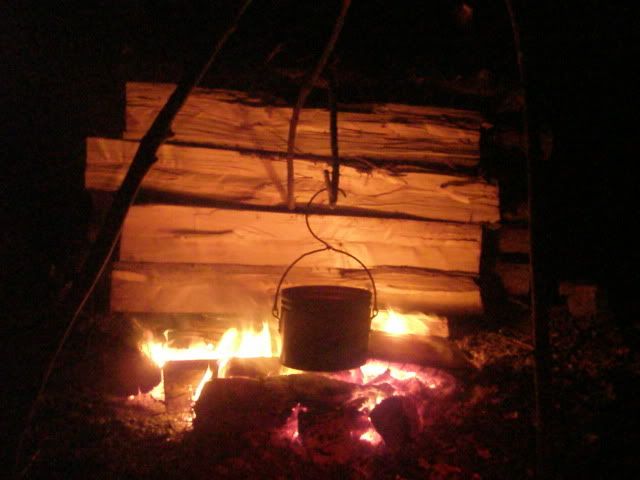
now for the temps I am just going to list them all and hope someone is interested enough to do any further maths they might wish to(d grade maths student I'm afraid).
All temps are in degrees celcius
Time Tree Tarp Difference
15.30 5 20 15
16.00 4 20 16
16.30 2 18 16 windy
17.00 2 22 20 raining
17.30 1 16 15
18.00 1 12 11 sunset approx
Split log reflector
18.30 1 22 21
19.00 1 18 17
19.30 1 20 19
20.00 1 14 13 fire somewhat burnt down
20.30 0 12 12 still burnt down
21.00 0 18 18
At this point after a hectic week of too many early mornings I gave up so I did not take any more temp readings and did not do the space blanket covered reflector but I have plans to do another night next week so I will endevour to take those next time.
I then hunkered down with the last of my book and slept from 22.30 until i woke up at 02.20 in need of a comfort stop. to say it was brass monkeys is an understatement!
Just from these readings it shows that a reflector can definately bounce back some heat and is certainly a good idea to build when possible. there doesnt appear to be a great difference between spilt logs or just standard logs although perhaps if I did it over several evenings it might give more detailed records. Perhaps another time.
Hope this has been of interest to you all
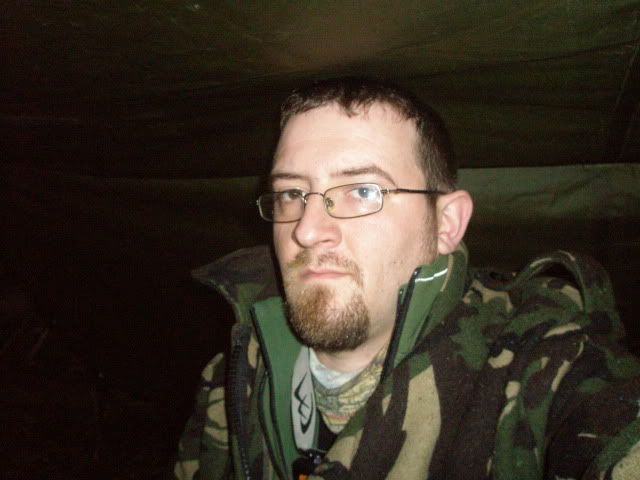
last night I performed my reflector experiment detailed in the winter crafting thread.
First I got the tarp up and the stove going for a brew

Then started work on the reflector with my trust GB SFA and a borrowed sledgehammer

Finished reflector

At this point the weather decided to give me a shower so I took shelter under the tarp made a brew and battoned some sticks to light the fire

Got the fire going with some birchbark and tinder card

I then spent the rest of the afternoon reading a book-Arrowland by Pete Kane and brewing up copious amounts of tea

every half hour I took two temperature readings one from inside the tarp and one from behind the tarp about ten paces distance away to allow any potential heat from fire to have disappeared into the general surroundings.
From 15.30 until 18.00 I used the reflector pictured above and from 18.30 until 21.00 I used split logs to form the reflector like so

now for the temps I am just going to list them all and hope someone is interested enough to do any further maths they might wish to(d grade maths student I'm afraid).
All temps are in degrees celcius
Time Tree Tarp Difference
15.30 5 20 15
16.00 4 20 16
16.30 2 18 16 windy
17.00 2 22 20 raining
17.30 1 16 15
18.00 1 12 11 sunset approx
Split log reflector
18.30 1 22 21
19.00 1 18 17
19.30 1 20 19
20.00 1 14 13 fire somewhat burnt down
20.30 0 12 12 still burnt down
21.00 0 18 18
At this point after a hectic week of too many early mornings I gave up so I did not take any more temp readings and did not do the space blanket covered reflector but I have plans to do another night next week so I will endevour to take those next time.
I then hunkered down with the last of my book and slept from 22.30 until i woke up at 02.20 in need of a comfort stop. to say it was brass monkeys is an understatement!
Just from these readings it shows that a reflector can definately bounce back some heat and is certainly a good idea to build when possible. there doesnt appear to be a great difference between spilt logs or just standard logs although perhaps if I did it over several evenings it might give more detailed records. Perhaps another time.
Hope this has been of interest to you all

